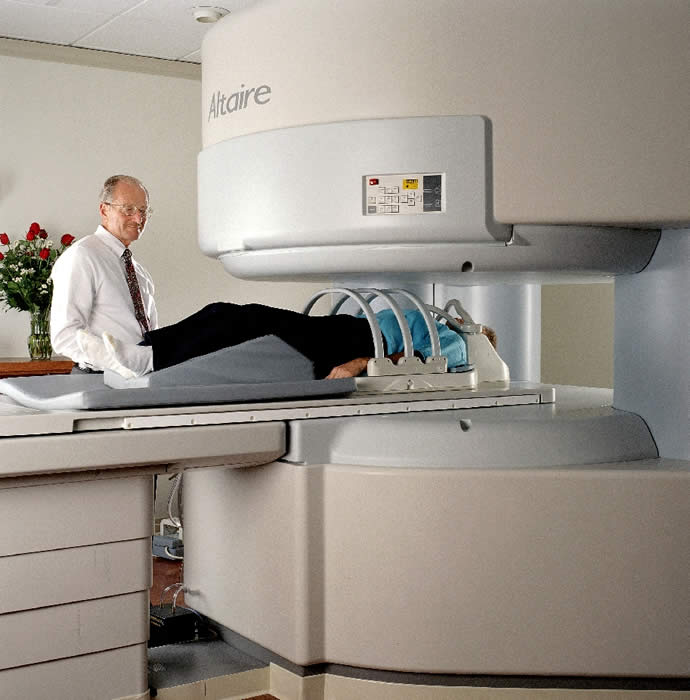Back, neck, knee, and shoulder pain; are they symptoms of a movement disorder?
If you suffer from back, neck, and shoulder pain and have seen the physical therapist, the chiropractor, pain management specialist among countless other degreed professionals without getting the problem resolved, you are not alone. There is a growing chorus of healthcare professionals who are deciding to do things differently because the tools they learned at school, in clinics, and in degree programs are not improving the outcomes of their patients the way they were told they would. These newly enlightened healthcare providers want to know why so many of these patients never get better, and in many cases made worse by surgeries and other interventions.
Being one of those doctors in the 1990s, I began to ask, “If what we do is supposed to be so effective, why are our results so uneven? The problem of uneven or inconsistent results is a problem that plagues many parts of the healthcare system, with poor long-term outcomes being symptom or drug managed, without a cure. Many of the tinkering that insurance companies have done using managed care and other fee management schemes have simply backfired and made the system worse, rather than better and more cost-effective.
Sometimes it takes a heretic or a doctor who is not willing to go with the crowd to make a difference. This is because healthcare itself is very slow to change, as we have seen with the movement to reduce the use of antibiotics (at least 20 years ago) or perhaps the doctor who discovered that stomach ulcers were caused by a bacteria named H. Pylori, but had a very difficult time being believed by his own profession, and meeting resistance when he suggested that he had an actual cure for the condition. At the time, it was common to manage the symptoms of the condition with surgeries and medications to reduce stomach acidity, resulting in a multi-billion dollar business for the pharmaceutical industry. In 1982, when H. pylori were discovered by Dr. Barry Marshall and Dr. Robin Warren, stress and lifestyle were considered the major causes of stomach and intestinal ulcers, however, Dr. Barry Marshall had tried numerous ways of convincing the medical community and the pharmaceutical industry that the bacteria was the cause of the ulcers. The pharmaceutical interests tried to undermine his efforts as well due to the effect this would have on their business interests. Finally, Dr. Marshall infected himself and once and for all proved that ulcers and some stomach cancers were indeed caused by H. Pylori, and he and Dr. Warren were awarded the Nobel Prize. It has taken years for global acceptance of their ideas. You can read more about their discovery here.
This is especially true of musculoskeletal medicine, and of chiropractors. From back pain to neck pain, to shoulder, knee, and even foot pain, chiropractors have developed a growing following since their approach has been very effective for many of the conditions the public suffers from, yet, many doctors still refuse to refer to them on a regular basis. Even Consumer Reports and Bottom Line is now saying Chiropractic should be first on anyone’s list for the treatment of lower back pain. This is likely due to the fact that they look at things functionally, and the adjustment to the spine and extremities will improve mobility, affecting the way we move.
A new way of thinking about back, neck, and shoulder pain is currently emerging using methods such as active evaluation and treat – test – treat protocols. In my book, Cheating Mother Nature, what you need to know to beat chronic pain, I referred to these doctors as enlightened practitioners. The book discussed the cause and effect of the way we are built, which is a series  of inherited traits we share with our parents and their parents. Since we develop out of toddler gait and begin to walk as we would as adults by around the age of six, we base what we consider to be normal on what we are used to. If we are inflexible or are tight all the time, these are normal to us but since there is no true normal, but actually a range of normal. Symptoms are merely our way of explaining that something is not normal to us. A lack of symptoms does not mean things functionally are ok, it just means we have no pain or discomfort we consider to be abnormal.
of inherited traits we share with our parents and their parents. Since we develop out of toddler gait and begin to walk as we would as adults by around the age of six, we base what we consider to be normal on what we are used to. If we are inflexible or are tight all the time, these are normal to us but since there is no true normal, but actually a range of normal. Symptoms are merely our way of explaining that something is not normal to us. A lack of symptoms does not mean things functionally are ok, it just means we have no pain or discomfort we consider to be abnormal.
This is perhaps why many of those in the healthcare industry often get it wrong when they try to consider and evaluate a lower back patient for example. Today, a new patient who has been in horrible pain in her mid and lower back explained that she woke up in pain two weeks ago, eventually visited the emergency room where x rays were taken, and was sent home with a large bill and no relief. She was also told she should get an MRI which at a cost of close to $1000, would be probably more costly than treating the condition with the appropriate healthcare practitioner. Her family doctor who was of little help offered some medication and never considered sending her to someone more appropriate such as a chiropractor. She visited a podiatrist who noticed callouses on the outside of her feet and suggested surgery would correct the problem, while never noticing she was built asymmetrically from the feet up. Professional bias is never helpful or cost-effective, and the effect of such a surgery would likely create other iatrogenic (doctor created) problems for her, due to the invasive nature of it. Today, she walked out of our chiropractic office with half the pain she visited us with.
noticing she was built asymmetrically from the feet up. Professional bias is never helpful or cost-effective, and the effect of such a surgery would likely create other iatrogenic (doctor created) problems for her, due to the invasive nature of it. Today, she walked out of our chiropractic office with half the pain she visited us with.
The truth is, unless you look at the patient properly, and understand the underlying cause of their pain, treating the condition is a waste of time and resources, for insurers and the patients who are paying a larger part of their healthcare tab these days. The patient asked me if she can now go back to the gym. Using active evaluation, I showed her why she should avoid it and she fully understood her limitations right now. Many therapists would have mistakenly begun with exercise protocols that would have worsened her condition.
Through the use of treat – test – treat, active evaluation, understanding body styles and patterns, myofascial release treatment, and a spinal adjustment, she felt greatly improved and off-the-shelf foot orthotics helped as well. In this age of value-conscious healthcare, looking at conditions like these needs a better approach than that of managing symptoms, professional bias.
Consideration of movement, lack of movement, asymmetry, and the problems with the way we move resulting in pain is a growing movement in chiropractic as well as in some physiotherapy circles. Many of these providers realize that treating back, neck, shoulder, or knee problems, as well as other conditions, requires more than a fast office visit, some therapies, and generic exercises. It requires individualized care with the understanding that we are all built differently, we all have different inherited traits that may be the reason for the pain. This is why treating these cases, all the same, is a waste of time and resources and why it is common for families to suffer from many of those same traits as recently reported in this latest study in Anesthesiology news (http://www.anesthesiologynews.com/ViewArticle.aspx?d_id=2&a_id=29036&d=Pain+Medicine&i_id=1131&i=December+2014).
 Thinking outside the box in the musculoskeletal realm is more important than ever, for the public to get the best value for their healthcare dollar. Movement-based healthcare providers such as chiropractors or chiropractic sports physicians are likely to be looked at differently by most healthcare providers in the next 20 years. As the general public finds itself paying more and more of their dollars toward healthcare services and since the money is now theirs, not their insurers, they need to become more informed and savvier with those dollars and how they get spent. They need to become better consumers and look for the best value in healthcare which will never be found when they see different doctors for different symptoms when they hurt. Why wait 20 years, the future is here now and these types of providers and more effective and safer.
Thinking outside the box in the musculoskeletal realm is more important than ever, for the public to get the best value for their healthcare dollar. Movement-based healthcare providers such as chiropractors or chiropractic sports physicians are likely to be looked at differently by most healthcare providers in the next 20 years. As the general public finds itself paying more and more of their dollars toward healthcare services and since the money is now theirs, not their insurers, they need to become more informed and savvier with those dollars and how they get spent. They need to become better consumers and look for the best value in healthcare which will never be found when they see different doctors for different symptoms when they hurt. Why wait 20 years, the future is here now and these types of providers and more effective and safer.
Perhaps, they need to see their chiropractor first for their musculoskeletal complaints and think of their chiropractor as their primary care doctor for the musculoskeletal system. Reading Cheating Mother Nature may be a great way to take control, since the book will teach you about who you hurt, the importance of movement, and joint and structural function, and how to best find those in healthcare who can help you have the best quality of life possible.
Read Cheating Mother Nature, what you need to know to beat chronic pain available through Amazon.com and other booksellers. Do you need professional help? Book online here.
